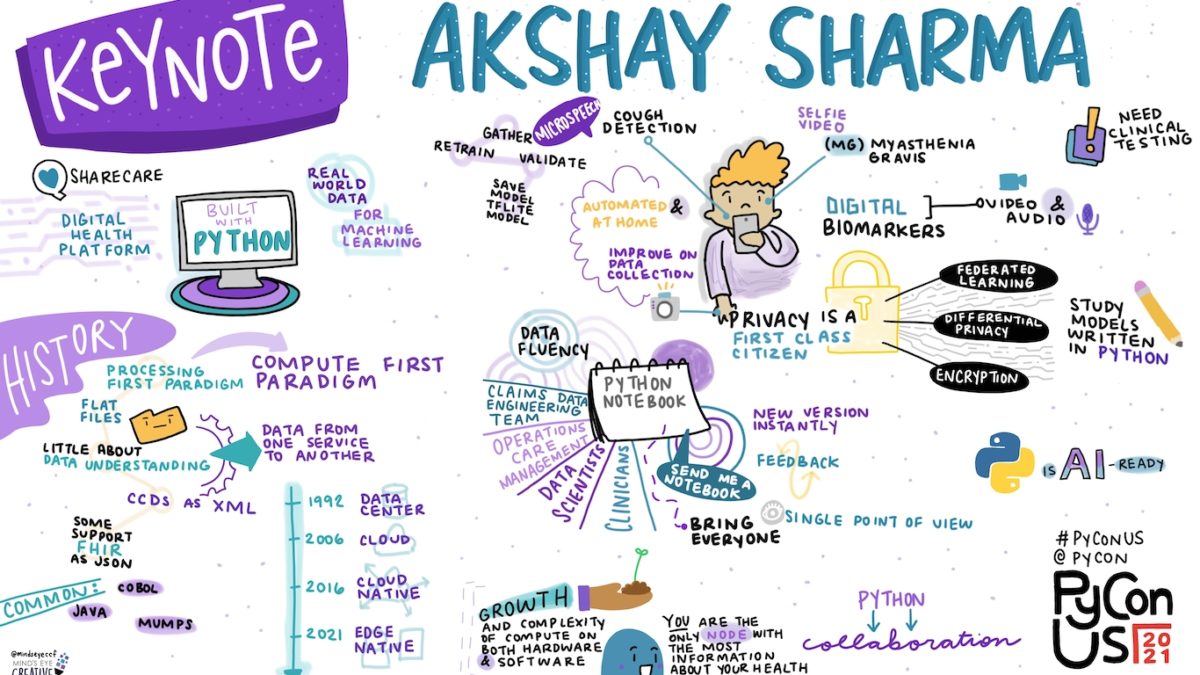The Pythonization of Healthcare

To understand where healthcare is heading, it’s important to consider the sector’s computational history. Traditionally, healthcare analytics have involved understanding a given set of data by using business intelligence-focused tools rather than learning from the data to build artificial intelligence (AI) models. Today, what constitutes health data sources is rapidly changing, and as its “capture” moves to the edge of the network – simply defined as the places where data is generated (e.g., mobile phones and smart devices) – its usability is coming into focus.
The wealth of health data generated across edge devices has enabled the collection of personalized, minute details such as our heart rates, blood pressure, and other wellness measures that were once only accessible at the doctor’s office. However, to capitalize on this for the benefit of our health, the technical handling must match the volume of real-time data and the manner in which it’s computed. Unfortunately, this often means that continuously computing data can’t be easily controlled through centralized data centers. Centralized data processes also suffer from information loss when the data gets transferred and translated from one internal system to another.
So how can healthcare teams solve for these challenges?
Part of the solution to enable data utilization may lie in both the coding language and the design of the digital platforms themselves. Introducing data fluency through solutions like Python notebooks can change the computational nature of healthcare. This approach can facilitate deep collaboration across all stakeholders involved in conducting research or providing care, all from the same data “point of view.” With our Toniq platform, we’re utilizing Python notebooks as a key tool for data fluency as well as building and validating AI models internally and externally.
I recently explored this topic and the future of AI in healthcare in a keynote presentation at PyCon 2021, the largest annual gathering focused on the use and development of the open-source Python programming language. If you missed it, check out the presentation for an in-depth look at how the Python language serves to centralize collaboration between stakeholders across the countless points of healthcare assessment and delivery. I hope you’ll learn from this close look at Python – healthcare’s new programming language of choice – and how it can unlock more value from health data, increase collaboration among stakeholders, and ultimately improve health outcomes.